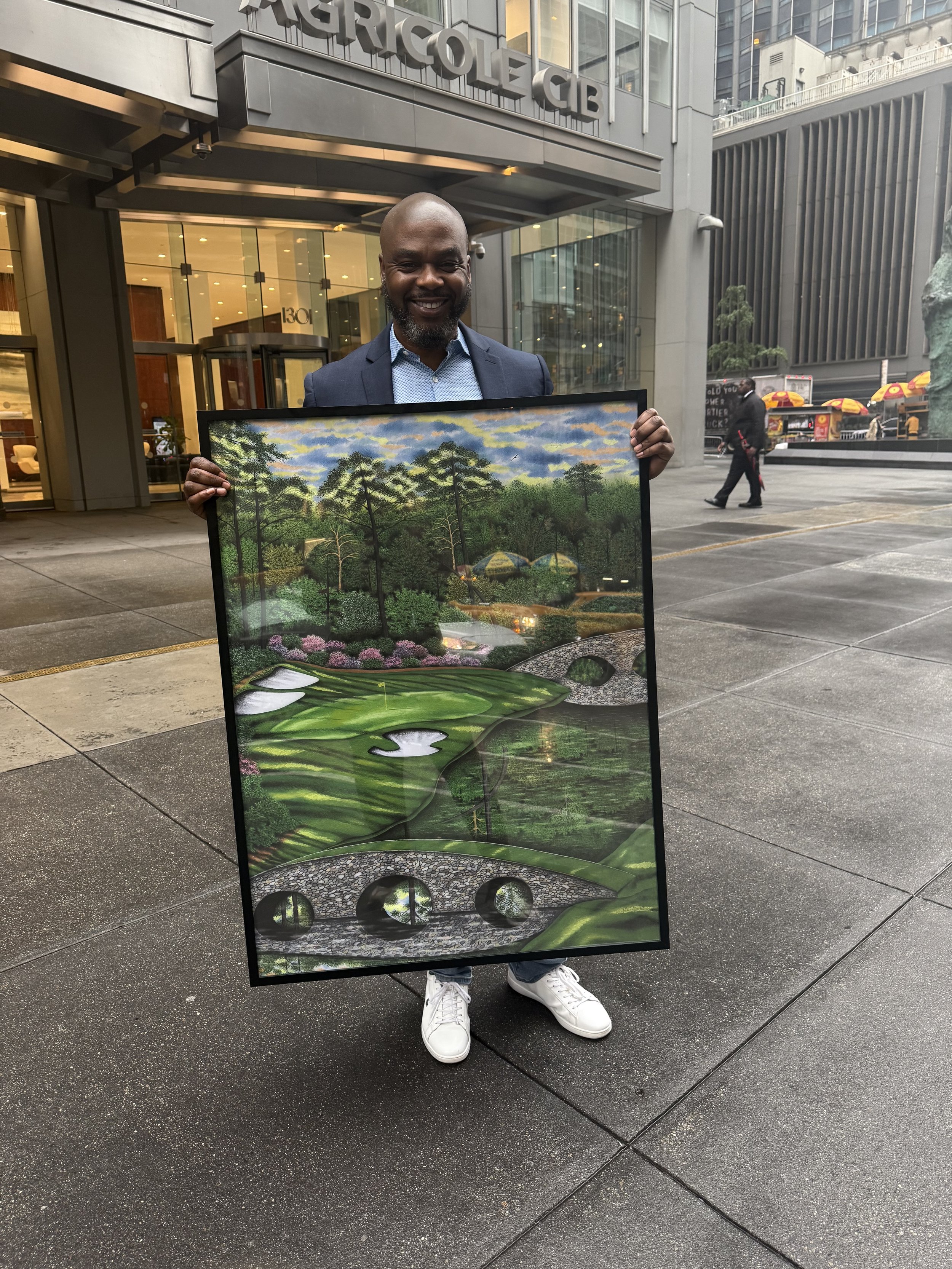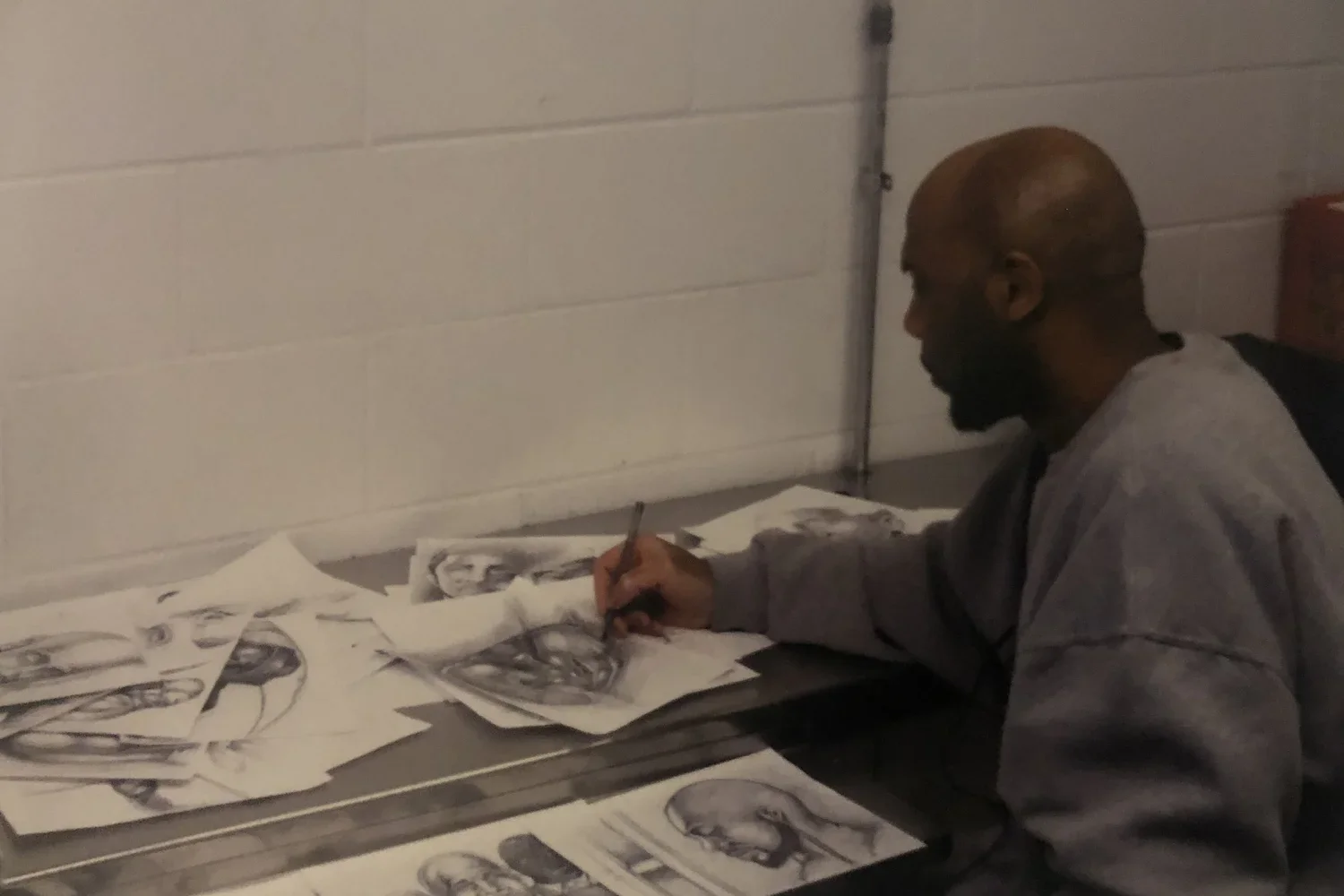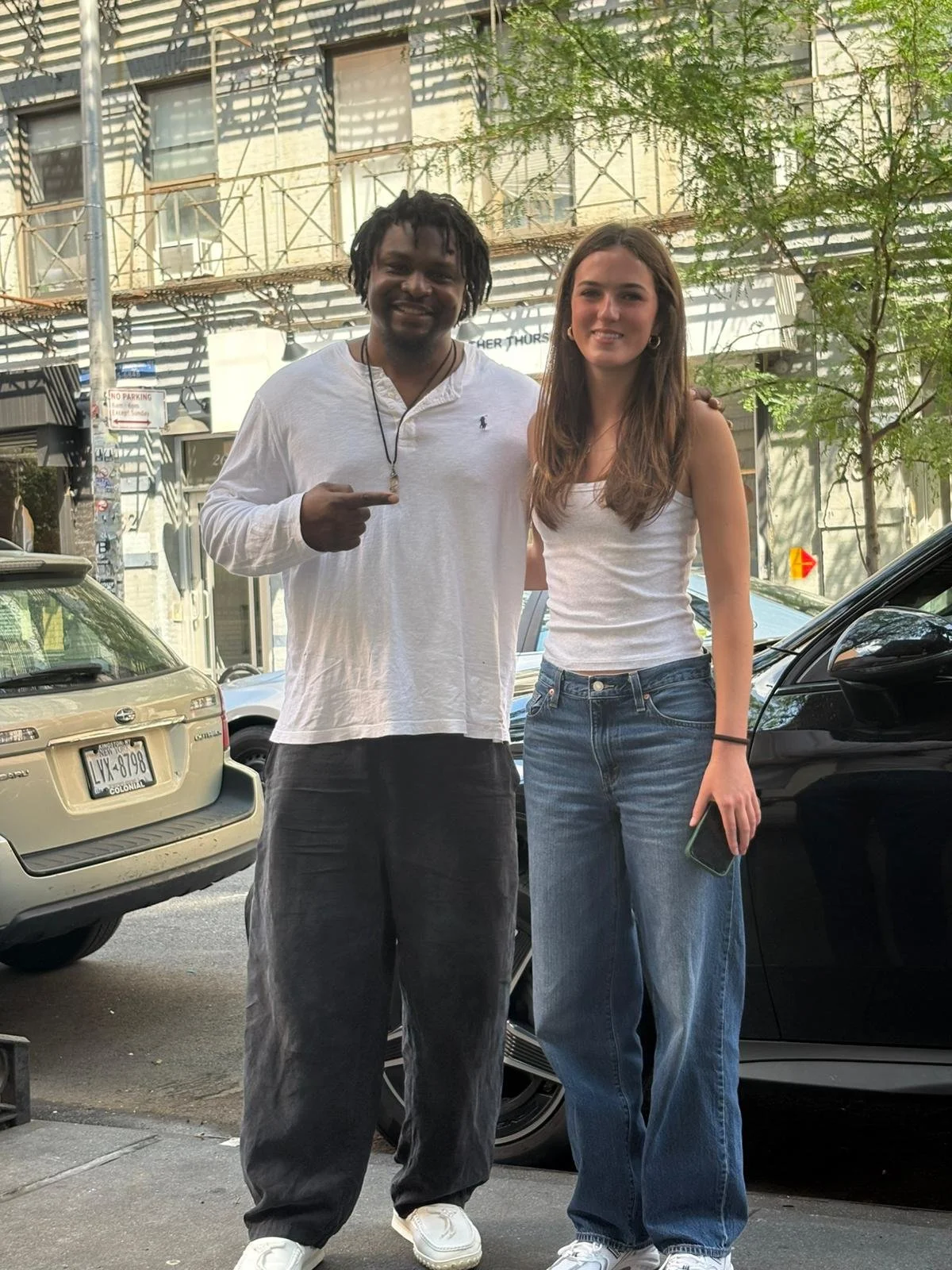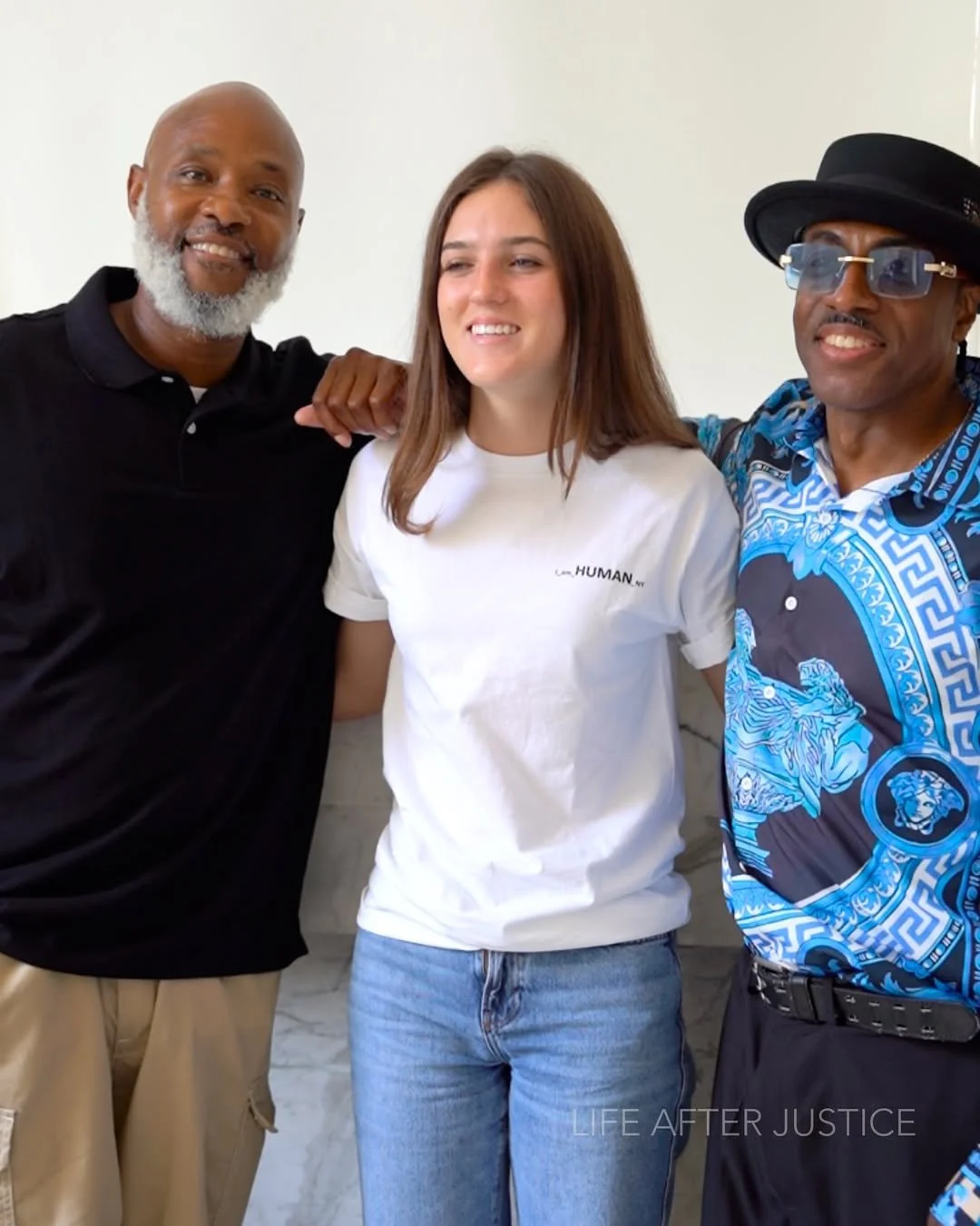Jarrett Adams
Wrongfully convicted at 17 and sentenced to 28 years, Jarrett Adams turned eight years in prison into a mission for justice. He studied law behind bars, won his own exoneration with the help of the Wisconsin Innocence Project, and became a defense attorney dedicated to freeing others. Today, as co-founder of Life After Justice, he fights to end wrongful convictions and partnered with I_am_HUMAN to help free the Waverly Two. Discover his extraordinary journey and read his memoir Redeeming Justice to support his work and the call for reform.
At just seventeen years old, Jarrett Adams was sentenced to 28 years in prison for a crime he did not commit. Wrongfully convicted by an all-white jury, he entered adulthood inside prison walls, stripped of his freedom but not his determination.
Instead of surrendering to despair, Jarrett began studying the law from his prison cell. He read every book, journal, and newspaper he could find, searching for a way to fight back. With the support of the Wisconsin Innocence Project, he overturned his conviction after serving eight years. The experience left him with a lifelong mission: to fight for those who, like him, had been silenced by wrongful convictions.
Jarrett went on to earn his law degree and became a defense attorney dedicated to justice reform. He co-founded Life After Justice, an organization that supports exonerees as they rebuild their lives. His legal work has freed others who were wrongfully imprisoned, and his voice has become one of the most powerful in the national fight for criminal justice reform.
I_am_HUMAN proudly joined forces with Jarrett Adams and Life After Justice in the campaign to free the Waverly Two. Together, through lobbying, advocacy, and awareness, we helped secure their release in 2025. That victory was not only for Terrence Richardson and Ferrone Claiborne, but for everyone who believes that freedom and dignity are worth fighting for.
Jarrett’s journey is proof that resilience can transform tragedy into change. From a prison cell to the courtroom, he has shown that justice is never out of reach when you refuse to give up.
To learn more about Jarrett’s extraordinary story and his fight for justice, read his memoir Redeeming Justice. By purchasing his book, you support his mission and carry forward the call to end wrongful convictions.
Valentino Dixon
Wrongfully imprisoned for 27 years, Valentino Dixon turned a box of colored pencils into a lifeline. From the confines of Attica Prison, he spent up to ten hours a day drawing vivid golf courses and landscapes, transforming pain into hope and proving that creativity can be an act of freedom. His art—now celebrated worldwide and collected by leaders like Michelle Obama—helped spotlight his innocence and ultimately secure his release in 2018.
In August 2025, I_am_HUMAN introduced Valentino’s art to President Bill Clinton during the Clinton Global Initiative, where Valentino met with him personally and gifted one of his renowned golf course drawings. With a feature film on his life set for release in 2026, Valentino’s story continues to inspire, standing as proof that truth, dignity, and art can outlast injustice.
Valentino Dixon spent 27 years behind bars for a crime he did not commit. What sustained him through the notorious Attica Prison was not bitterness but a box of colored pencils and his own extraordinary gift. For up to ten hours a day, he drew — landscapes, portraits, and golf courses that became windows of hope in a place designed to crush the spirit.
His drawings carried more than beauty. They became a lifeline, a declaration that art could survive even the harshest confinement. Through every line and shade, Valentino spoke of resilience and perseverance, reminding the world that even in the darkest circumstances, creativity can be an act of freedom.
That act of creation eventually helped open the prison gates. In 2018, after nearly three decades of wrongful imprisonment and years after another man had confessed to the shooting, Valentino finally walked free. His story drew national attention, earning Emmy-nominated coverage and international recognition, including a Gold Medal from the Vatican.
Today, Valentino’s art hangs in the homes of leaders and icons, including Michelle Obama, and he has shared space with the likes of Tiger Woods and Jack Nicklaus. Yet his true legacy lies not in fame, but in the message carried through every piece: that dignity, hope, and truth can outlast injustice. In August 2025, I_am_HUMAN introduced Valentino’s art to President Bill Clinton during the Clinton Global Initiative, where Valentino met with him personally and gifted one of his renowned golf course drawings. With a feature film on his life set for release in 2026, Valentino’s story continues to inspire, standing as proof that truth, dignity, and art can outlast injustice.
At I_am_HUMAN, we are proud to support Valentino’s art, because each drawing is more than a masterpiece. It is proof that the human spirit, once silenced, can still find a way to speak.
Valentino Dixon drew himself to freedom. His art reminds us that even when justice is delayed, hope must never be abandoned.
Billie Allen
At just nineteen, Billie Allen was wrongfully convicted and sent to Federal Death Row, where he has spent more than twenty-five years fighting for his life and his freedom. Instead of surrendering, he turned to art and writing, transforming pain into powerful works shown in museums, galleries, and the homes of activists and lawmakers. Through petitions, public talks, and extraordinary creativity, Billie proves that confinement cannot silence courage or compassion. His ongoing fight for justice calls on all of us to see, to act, and to demand freedom for the wrongfully convicted.
At just nineteen years old, Billie Allen was sentenced for a crime he did not commit. For more than two decades, he has lived on Federal Death Row, cut off from freedom but never from hope. Now in his mid-forties, he has spent the majority of his life behind prison walls, yet his spirit and his voice have only grown stronger.
Billie’s journey is one of unimaginable loss and extraordinary resistance. The weight of wrongful conviction, poor legal defense, and the constant threat of federal executions could have broken him. Instead, he chose to fight back through creativity. From his cell, he became an artist, a writer, and an advocate — transforming pain into beauty and despair into community.
His paintings are not just images on canvas. They are testaments of survival, each brushstroke capturing both the reality of confinement and the possibility of liberation. Through his art, Billie has reached far beyond prison walls, moving thousands who see not a “prisoner,” but a man with vision, resilience, and a voice that refuses to be silenced. His work has been shown in museums, galleries, and conferences across the country, and now hangs in the homes of lawmakers, musicians, and activists who recognize the power of his message.
Even with the years stolen from him, Billie has given back. He has inspired hundreds of thousands through petitions, public talks, and his art, proving that incarceration cannot contain creativity or compassion. In his own words, “Our shared humanity asks this one thing of us: to recognize another’s suffering as our own, and to do something about it.”
Billie Allen’s story is still unfolding. He continues to wait for the justice that has been denied to him for more than twenty-five years. His art and his voice remind us of what is at stake, not just for him, but for every person wrongfully convicted.
Billie’s fight for freedom is not only his own. It is a call for all of us to see, to act, and to demand justice
Russel Craig
A self-taught artist and survivor, Russell Craig transformed nearly a decade of incarceration into powerful art that gives voice to the silenced. Drawing from his experiences in foster care and prison for a non-violent offense, he uses color and texture with purpose—orange for prison, teal for cell doors, leather for Black bodies under oppression—to confront mass incarceration and racial injustice. His work, renowned for its social justice activism, has been exhibited at Rutgers University, the Columbia University Center for Social Justice, the Armory Art Show, and other major venues, earning recognition from The New York Times and The Guardian. I_am_HUMAN proudly supports Craig’s vision, where every brushstroke becomes a call for justice and a declaration of freedom.
Russel Craig is more than an artist. He is a survivor, a storyteller, and a visionary who transformed nearly a decade of incarceration into art that speaks for those silenced by the system.
Raised in the foster care system, Russel found his voice through art long before he found freedom. After a non-violent drug conviction led to years behind bars, he turned confinement into purpose. Self-taught and relentless, he began painting the realities that defined his life—mass incarceration, racial injustice, and the criminalization of Black communities in America.
His work carries layers of meaning. Orange evokes the harshness of prison life. Teal recalls the color of his cell door. Leather, sewn into his murals, represents the Black body under oppression. Every piece transforms trauma into testimony, using art as both survival and resistance.
Russel’s art has reached far beyond prison walls. His socially driven work has been exhibited at Rutgers University, the Columbia University Center for Social Justice, and the Armory Art Show, among others. His pieces have been featured in The New York Times, The Guardian, and The Washington Post, earning recognition for his fearless blend of beauty and activism.
Through fellowships with Right of Return and the Ford Foundation’s Art for Justice, Russel continues to mentor emerging artists and advocate for justice through creativity. At I_am_HUMAN, we proudly support his vision, where every brushstroke challenges inequality and redefines freedom.
Russel Craig paints so we remember. His art is his protest, his freedom, and his invitation to see the humanity in us all.
The Waverly Two
In 1998, Terence Richardson and Ferrone Claiborne were found not guilty of killing a Virginia police officer—yet a judge still sentenced them to life in prison. For 26 years they remained behind bars while I_am_HUMAN, Life After Justice, and allies lobbied the DOJ, Senators, and the White House to demand their freedom. In 2025, a presidential commutation finally set them free. Their journey is a stark reminder that wrongful convictions are not statistics but stolen lives, and why we continue to fight for justice and dignity.
Terence Richardson and Ferrone Claiborne should never have lost their freedom. In 1998, they were accused of killing a police officer in Waverly, Virginia. A jury found them not guilty, yet through a rare legal maneuver, a judge sentenced them to life in prison anyway. Their only crime was being young Black men in a system that too often values punishment over truth.
For more than two decades, Terence and Ferrone lived behind bars while families, advocates, and organizations like I_am_HUMAN and Life After Justice refused to give up. We lobbied the Department of Justice, pressed Senators, and carried their story to the White House. We fought because their story is not just about two men. It is about a system that can strip away innocence and silence lives.
In 2025, the fight was finally won. Thanks to relentless advocacy and a presidential commutation, Terence and Ferrone walked free. Terence stepped back into the world after decades lost, and just weeks later Ferrone joined him, reunited with his co-defendant, brother in resilience, and fellow survivor of a broken system.
Their freedom is a victory, but it is also a reminder. Years of life were stolen. Families were torn apart. Justice was delayed. The story of the Waverly Two proves why we must keep fighting: because wrongful convictions are not statistics, they are human beings whose dignity and freedom matter.
We celebrate their freedom. We do not forget the years lost. This is why we fight.









